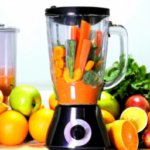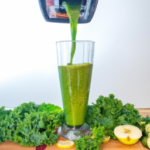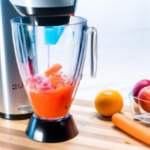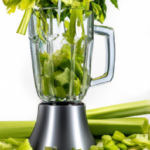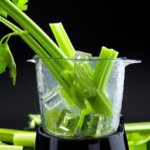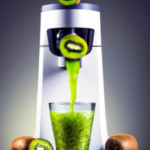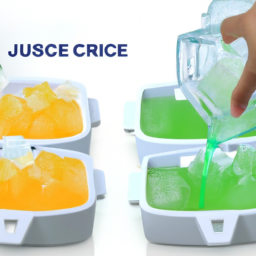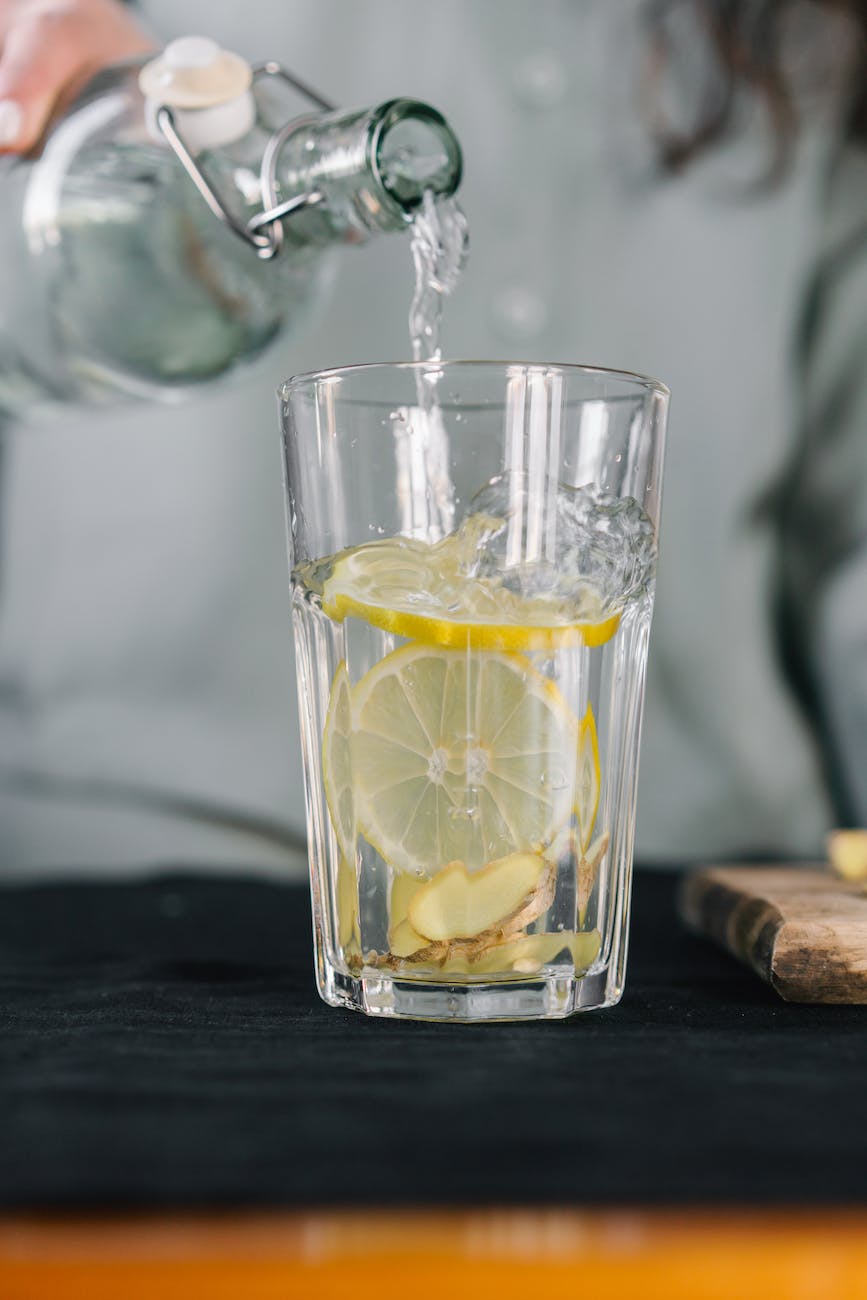Juice
How To Make Juice With A Vitamix
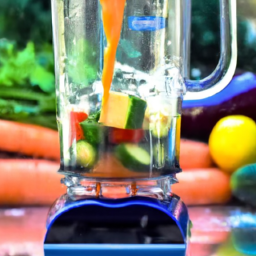
I’m really fond of a nice, fresh glass of juice. There’s just something special about the bright colors and tastes that seems like a delightful gift to both my body and my palate.
And when it comes to making juice at home, there’s no better tool than a Vitamix blender. With its powerful motor and high-quality blades, the Vitamix makes quick work of even tough fruits and vegetables, leaving you with a smooth and delicious juice every time.
But making juice with a Vitamix can be a little intimidating if you’ve never done it before. What ingredients should you use? How do you prepare them? And how do you get that perfect texture without any pulp or chunks?
In this article, I’ll walk you through everything you need to know to make amazing juice with your Vitamix, from selecting the right ingredients to cleaning up afterwards. So grab some fruits and veggies, and let’s get started!
Key Takeaways
- Select high-quality fruits and vegetables that are in season and at their peak ripeness to achieve the best flavor and nutritional value.
- Straining juice using a fine mesh strainer or cheesecloth can result in a smoother texture, but it also removes some nutrients and fiber.
- Cleaning and maintaining the Vitamix blender after each use is important for its longevity and proper functioning.
- Experimenting with different combinations of fruits and vegetables, adding superfoods or supplements, and sharing experiences over a glass of fresh juice can enhance the enjoyment and nutritional value of homemade juice.
Select the Right Ingredients
Before you start blending, make sure you’ve got the right ingredients – it’ll make a world of difference in the taste and nutrition of your juice!
When selecting fresh produce, it’s important to choose high-quality fruits and vegetables that are in season and at their peak ripeness. This will ensure that your juice has the best possible flavor and nutritional value.
When choosing your ingredients, it’s also important to think about balancing flavors. For example, if you’re using very sweet fruits like oranges or pineapples, you may want to balance them out with some tart fruits like lemons or limes. Similarly, if you’re using bitter greens like kale or spinach, you may want to add sweeter fruits like apples or pears to counteract their bitterness.
By selecting the right ingredients and balancing flavors, you can ensure that your juice is not only delicious, but also packed with nutrients.
Now that you’ve selected your ingredients, it’s time to move on to preparing them for blending.
Prepare Your Ingredients
First, you’ll need to gather all your ingredients for blending. For my go-to green juice recipe, I typically use kale, spinach, cucumber, celery, green apple, lemon, and ginger. However, feel free to experiment with different combinations of fruits and vegetables to find what you like best. You can also substitute ingredients based on what you have on hand or what’s in season. For example, if you don’t have kale, you could use Swiss chard or collard greens instead. If you don’t have green apple, try using a pear or pineapple.
When preparing your ingredients, make sure to wash them thoroughly to remove any dirt or debris. It’s also important to chop them into small pieces to ensure they blend smoothly in the Vitamix. For leafy greens like kale and spinach, remove the tough stems before chopping. Once everything is prepped, you’re ready to start blending! In the next section, I’ll explain how to set up your Vitamix for optimal blending.
Juice recipe ideas Ingredient substitutions
Kale Swiss chard or collard greens
Spinach Arugula or watercress
Cucumber Zucchini or bell pepper
Celery Carrots or fennel
Green apple Pear or pineapple
Lemon Lime or grapefruit
Ginger Turmeric or mint
Now that you’ve prepared your ingredients, it’s time to set up your Vitamix for maximum blending efficiency.
Set Up Your Vitamix
Now that we’ve got our ingredients ready, it’s time to set up our Vitamix blender. The first step is to assemble the blender by placing the pitcher onto the motor base and securing it in place.
Next, we need to choose the right speed for our juice, depending on the ingredients we’re using. Finally, we can add our prepared ingredients to the container, making sure not to overfill it beyond the recommended maximum capacity.
Following these steps will ensure a smooth and efficient blending process, resulting in a delicious and nutritious juice.
Assemble the Blender
To start making juice in your Vitamix, simply attach the blending container to the base and plug it in, then you’re ready to go! Before assembling the blender, it’s important to ensure that the machine is properly maintained to avoid any potential issues during use. Regular cleaning of the blades and container, as well as checking for any signs of wear and tear, can prevent any damage to the blender and ensure that it continues to work properly.
Once the blender is assembled, it’s time to start making juice! Here are some tips to troubleshoot any issues you may encounter during the blending process:
- Make sure all ingredients are cut into small pieces to avoid jamming the blades.
- Add liquid slowly to prevent the mixture from becoming too thick.
- Pause the blender occasionally to scrape down the sides of the container.
With these tips in mind, you can confidently move on to the next step of choosing the right speed for your juice.
Choose the Right Speed
As you begin blending your juice with a Vitamix, it’s important to choose the right speed to achieve the texture and consistency you desire. The speed of the blender greatly affects the size and shape of the particles in your mixture.
For instance, a lower speed will create larger particles while a higher speed will produce smaller, more evenly distributed particles. Adjusting the speed of your Vitamix can help you achieve a smooth and velvety texture for your juice.
High speed is recommended for fibrous fruits and vegetables, while low speed is ideal for soft and juicy produce. Experimenting with blending techniques and adjusting the speed can help you achieve the perfect texture for your juice.
Once you have decided on the right speed, it’s time to move on to the next step of adding ingredients to the container.
Add Ingredients to the Container
When adding ingredients to your container, you may be tempted to overfill it, but be careful not to do so as it can affect the blending process and result in a less desirable texture. It’s important to follow the recommended ingredient ratios for your recipe to achieve the desired flavor and consistency.
For example, if you’re making a green juice, a good ratio to follow is 3:1:1, meaning three parts leafy greens, one part fruit, and one part water. Another important consideration when adding ingredients is flavor combinations. While it may be tempting to throw in every fruit and vegetable you have on hand, not all combinations will taste good together.
It’s important to experiment and find what works for your taste buds. Some popular flavor combinations include pineapple and ginger, apple and kale, and carrot and orange. Once you have added your ingredients to the container, it’s time to blend them into a delicious juice.
Transitioning into the next section, the blending process is where the magic happens. With your ingredients in the container, it’s time to blend them to the right consistency.
Blend Your Ingredients
Now it’s time to blend everything together in your Vitamix. The key to making delicious juice is to blend your ingredients properly. Whether you’re making a green juice or a fruit smoothie, there are some key blending techniques that you should keep in mind.
First, start by blending your leafy greens and liquid together. This will help break down the greens and create a smooth base for your juice. Next, add in your fruits and any other ingredients, such as nuts or seeds. Be sure to blend everything until it’s smooth and creamy, with no chunks or bits left behind.
Finally, taste your juice and adjust the flavors as needed. If it’s too thick, you can add more liquid, and if it’s too sweet, you can add more greens. With these simple blending techniques, you can create a wide variety of smoothie variations that are both healthy and delicious.
Now that your juice is blended to perfection, it’s time to strain it. This will help remove any pulp or seeds that may be left behind, giving you a smooth and silky juice. To strain your juice, simply pour it through a fine-mesh strainer or nut milk bag into a clean container. You can also use a cheesecloth or coffee filter if you don’t have a strainer.
Once your juice is strained, you can enjoy it immediately or store it in the fridge for later.
Strain Your Juice
Now that I’ve blended my ingredients, it’s time to strain the juice.
To do this, I’ll need a fine mesh strainer or cheesecloth to remove any remaining pulp and fibers.
I’ll carefully pour the juice through the strainer or cheesecloth into a bowl to collect the pure juice.
This step ensures a smooth and consistent texture, and removes any unwanted bits that may affect the taste or quality of the juice.
Use a Fine Mesh Strainer or Cheesecloth
To strain the juice, simply place a fine mesh strainer or cheesecloth over a bowl and pour the mixture through it. This is one of the most common and effective methods for removing pulp and fibers from your juice. As the juice passes through the strainer or cheesecloth, it separates from the pulp and fibers, leaving you with a smooth liquid that you can enjoy.
Using a fine mesh strainer or cheesecloth has several benefits. Firstly, it’s an easy and quick method that requires minimal effort – all you need to do is pour the juice through the strainer and let gravity do the work. Secondly, it’s a very effective method that removes most of the pulp and fibers, resulting in a smoother and more enjoyable juice. Lastly, it’s a versatile method that can be used for a variety of fruits and vegetables, making it a great alternative to other straining methods.
If you’re looking to remove even more pulp and fibers from your juice, the next step is to remove the remaining bits from the strainer or cheesecloth. This can be done by gently pressing the pulp with a spoon or spatula to extract all the juice. Alternatively, you can use a nut milk bag for an even smoother texture.
Remove Pulp and Fibers
Removing the pulp and fibers from your juice is crucial to achieving a smoother and more enjoyable texture. While using a fine mesh strainer or cheesecloth is the most common method, there are other alternative straining methods available. However, it’s important to note that removing the pulp also means removing some of the nutrients and fiber that come with it.
Consuming pulp has many benefits, including aiding in digestion and keeping you feeling full for longer periods of time. If you prefer to keep the pulp in your juice, consider using a blender with a high-powered motor, like a Vitamix, to break down the fibers and achieve a smoother consistency.
Regardless of whether you choose to keep or remove the pulp, straining your juice is a necessary step in the process.
To collect the juice in a bowl, place the strainer or cheesecloth over the bowl and pour the mixture from the blender into it. Gently press the pulp with a spoon or spatula to extract as much juice as possible.
Once the juice has been collected, it can be consumed as is or stored in the refrigerator for later use.
Collect Juice in a Bowl
You’ll need a bowl to gather the gleaming gold goodness of your freshly squeezed fruit. Using a bowl to collect the juice has several benefits. Firstly, it makes it easier to pour the juice into a glass or container. Secondly, it prevents any accidental spillage or mess on your countertop. Additionally, it allows you to easily measure the amount of juice you have made for recipes or serving sizes.
If you don’t have a bowl, you can still collect the juice without one. A common way is to use a pitcher or large measuring cup. However, keep in mind that these alternatives may not be as accurate for measuring the amount of juice made. Another option is to place the Vitamix container directly over a glass or container and pour the juice out of the spout. However, this may result in some pulp or fiber ending up in the juice.
Now that you’ve collected your freshly squeezed juice, it’s time to serve and enjoy!
Serve and Enjoy
Now it’s time to savor the fruits of your labor and enjoy a refreshing glass of homemade juice straight from your Vitamix. Here are three tips to help you enjoy your juice even more:
-
Get creative with garnish ideas: Add a slice of fruit or vegetable to the rim of your glass, or sprinkle some herbs or spices on top of your juice for an extra burst of flavor.
-
Pair your juice with a meal: Different juices can complement different foods. For example, a green juice pairs well with a light salad, while a citrusy juice is a great accompaniment to seafood.
-
Serve your juice immediately: Freshly made juice is at its best when consumed right away, as it can lose some of its nutritional value over time.
To store any leftover juice, transfer it to an airtight container and refrigerate it as soon as possible. This will help preserve its freshness and nutritional value for up to 24 hours.
Store Leftover Juice
To keep your leftover juice fresh and nutritious, simply transfer it to an airtight container and refrigerate it immediately. This will help to slow down the oxidation process and preserve the vitamins and nutrients in the juice. It is important to note that fresh juice is best consumed immediately after it is made, but if you need to store it, follow these tips for extending the shelf life of fresh juice:
| Tips for Extending the Shelf Life of Fresh Juice | ||||
|---|---|---|---|---|
| Store juice in an airtight container | Keep juice refrigerated at all times | Consume juice within 24-48 hours | Avoid exposure to light and air | Shake well before drinking |
By following these tips, you can enjoy your fresh juice for a longer period of time without compromising its nutritional value. Now that you know how to store your leftover juice, it’s time to move on to the next step – cleaning your Vitamix.
Cleaning your Vitamix is an important part of the juicing process as it helps to ensure that your machine remains in good working condition and that your juice is free from any leftover residue or bacteria.
Clean Your Vitamix
When it comes to cleaning my Vitamix, I always start by rinsing the blender under running water to remove any remaining residue.
Next, I add a little bit of soap and water to the container and blend on high for 30 seconds to ensure that every nook and cranny is thoroughly cleaned.
This method not only removes any leftover juice or smoothie, but also helps prevent any bacterial growth that may occur if the blender is not cleaned properly.
Rinse Blender Under Running Water
Simply hold the blender under the faucet and let the cool water wash away any leftover pulp and seeds. Rinsing your blender before using it is important because it removes any residue left from previous uses and ensures that your juice is fresh and free from any unwanted flavors.
Additionally, rinsing your blender with cold water is beneficial because it helps to preserve the nutrients in your fruits and vegetables. It’s important to note the temperature of the water when rinsing your blender. Using hot water can damage the blades and reduce the lifespan of your vitamix. Therefore, it’s best to stick with cool or lukewarm water when rinsing your blender before and after use.
Once your blender is thoroughly rinsed, you can move on to the next step of adding soap and water to the container.
Add Soap and Water to Container
Ah, the satisfying sound of soap and water mixing together in the blender container, a symphony of cleanliness. Adding soap to the container is an important step in the cleaning process as it helps remove any remaining residue from previous blends and eliminates any bacteria that may be present.
Here are four benefits of using soap for cleaning:
- Soap is a surfactant, which means it can break down oils and fats that are often left behind in the blender container after blending.
- Soap is effective in removing bacteria and germs that can accumulate on the blender container over time.
- Soap is a cost-effective cleaning agent that is readily available in most households.
- Soap is a gentle cleaner, making it safe to use on the blender container without causing damage to the surface.
While there are alternatives to soap for cleaning, such as vinegar or lemon juice, these may not be as effective in removing all types of residue and bacteria. It’s important to note that using harsh chemicals or abrasive materials on the blender container can cause damage to the surface and affect the taste of future blends.
Now that the soap and water have been added to the container, it’s time to blend on high for 30 seconds to fully clean the blender.
Blend on High for 30 Seconds
Now it’s time to blend on high for 30 seconds and let the soap and water work their magic. As I press the button on my Vitamix, I can hear the powerful motor whirring to life. Blending is a great way to extract juice from fruits and vegetables because it breaks down the fiber and makes the nutrients more easily absorbable. Unlike juicing, which separates the juice from the pulp, blending keeps all the good stuff intact, resulting in a thicker, more nutritious drink.
To achieve a smooth texture, there are a few tips to keep in mind. First, make sure to chop your fruits and vegetables into small pieces before adding them to the blender. This will help prevent any large chunks from getting stuck in the blades and ensure a uniform blend. Second, start with a small amount of liquid and gradually add more as needed. Too much liquid can result in a watery consistency, while too little can make it difficult to blend. Lastly, blend for at least 30 seconds to ensure everything is well incorporated.
As important as it is to know how to make juice with a Vitamix, it’s also crucial to learn how to properly maintain and care for your machine.
Maintenance and Care
When it comes to maintaining and caring for my Vitamix, there are a few key points that I always keep in mind.
Firstly, I make sure to clean the blades and container thoroughly after every use to prevent any buildup of residue or bacteria.
Secondly, I avoid overfilling the blender to ensure that it operates smoothly and efficiently.
Finally, I always replace any worn or damaged parts as needed to keep my Vitamix in top working condition.
By following these simple steps, I can ensure that my Vitamix will continue to deliver high-quality performance for years to come.
Clean Blades and Container After Use
Don’t forget to rinse the blades and container of your Vitamix thoroughly after each use to ensure they’re clean for the next time you make juice. Effective cleaning techniques are essential to maintaining your Vitamix and ensuring its longevity. Leaving residue on the blades can cause the buildup of bacteria, which can be harmful to your health. Therefore, it’s essential to wash the blades and container with warm soapy water immediately after use.
The importance of routine maintenance cannot be overlooked, as it helps to keep your Vitamix in good working condition. If you use your Vitamix regularly, it’s essential to clean it daily, but if you use it less often, cleaning it after each use might suffice.
It’s also crucial to check your Vitamix regularly for any signs of wear and tear, such as cracks or leaks, and to replace any worn-out parts immediately. Keeping your Vitamix clean and well-maintained will ensure that it continues to provide you with delicious and healthy juices for years to come.
When you’re done cleaning the blades and container, it’s time to move on to the next step, which is avoiding overfilling the blender.
Avoid Overfilling the Blender
To prevent damaging your blender, be mindful of the amount of ingredients you add and avoid filling it past the recommended capacity. Overfilling the blender can cause spills and accidents, which can damage the machine and even cause injuries.
Here are three things to keep in mind to avoid overfilling the blender:
-
Check the recommended capacity of your blender. This information can usually be found in the user manual or on the manufacturer’s website. Knowing the maximum capacity of your blender will help you avoid overfilling it and prevent spills and accidents.
-
Measure your ingredients carefully. Using measuring cups and spoons will help you ensure that you are adding the right amount of each ingredient. This will not only help you avoid overfilling the blender, but it will also help you achieve the right texture and consistency for your juice.
-
Start with a small amount of liquid. If you are making a juice that requires a lot of ingredients, it can be tempting to add all of them at once. However, this can easily cause the blender to become overfilled. Instead, start with a small amount of liquid and gradually add more as you blend. This will help you avoid spills and accidents while ensuring that your juice is blended to perfection.
To prevent spills and accidents, it’s important to be mindful of the amount of ingredients you add to your blender. However, even with careful use, parts of your blender may eventually wear out and need to be replaced. In the next section, we’ll discuss how to replace parts when needed.
Replace Parts When Needed
If your blender parts start to wear out, it’s important to replace them promptly to ensure safe and efficient blending. Over time, the blades, container, lid, and tamper may become damaged or worn, which can affect the quality and consistency of your juice. Here are some troubleshooting tips to help you identify when it’s time to replace your blender parts:
| PART | SIGNS OF WEAR |
|---|---|
| Blades | Dullness, chipping, or rust |
| Container | Cracks, leaks, or cloudiness |
| Lid | Loose or cracked seal, difficulty removing or securing |
| Tamper | Bent or broken handle, cracks in the shaft |
Replacing these parts is relatively easy and can be done through the manufacturer’s website or authorized dealers. It’s important to use genuine replacement parts to maintain the quality and safety of your blender. By replacing worn parts, you can ensure that your blender continues to produce high-quality and consistent juice for years to come.
As you experiment with new recipes, it’s important to keep in mind the state of your blender parts. By regularly checking and replacing worn parts, you can ensure that your juices are of the highest quality and consistency possible. With a well-maintained blender, you can continue to create and enjoy a wide variety of juices and smoothies.
Experiment with New Recipes
I love experimenting with new recipes when making juice with my Vitamix. One of my favorite things to do is try different combinations of fruits and vegetables to create unique and delicious flavor profiles.
Additionally, I like to add superfoods or supplements to boost the nutritional value of my juice. Finally, I always share my creations with friends and family to get feedback and inspire them to try new things in their own kitchens.
It’s amazing how much fun and creativity can be found in making juice with a Vitamix!
Try Different Combinations of Fruits and Vegetables
Experimenting with various fruit and vegetable combinations can elevate the flavor profile of your homemade juice, thanks to the versatility of the Vitamix. Here are some juice pairing suggestions to get you started:
-
Sweet and Tart: Combine oranges and cranberries for a juice that’s both refreshing and tangy. This combination is also high in vitamin C and antioxidants, which can boost your immune system.
-
Green Powerhouse: Mix kale, spinach, cucumber, and apple for a juice that’s packed with nutrients like iron, calcium, and vitamin K. This combination is also great for detoxifying the body.
-
Tropical Twist: Blend together pineapple, mango, and coconut water for a juice that’s sweet and tropical. This combination is high in vitamin C and can help with digestion.
-
Spicy Kick: Add ginger and lemon to your juice for a spicy kick. This combination is great for reducing inflammation and boosting digestion.
By trying out different combinations of fruits and vegetables, you can not only enhance the taste of your juice but also reap the benefits of juicing different fruits and vegetables.
In the next section, we’ll explore how to add superfoods or supplements to further boost the nutritional value of your juice.
Add Superfoods or Supplements
As I mentioned earlier, trying different combinations of fruits and vegetables is a great way to make delicious and nutritious juice with your Vitamix. However, to take your juice to the next level, consider adding some superfoods or supplements to the mix.
Superfoods are nutrient-dense foods that offer a range of health benefits. Some examples of superfoods that can be added to your juice include chia seeds, spirulina, acai berries, and maca powder. These ingredients are packed with vitamins, minerals, and antioxidants that can help boost your immune system, improve digestion, and even prevent chronic diseases.
Choosing the right supplements can also enhance the nutritional value of your juice. For example, adding a scoop of protein powder can help you meet your daily protein needs, while a probiotic supplement can improve gut health and digestion.
By adding superfoods and supplements to your juice, you can create a personalized blend that meets your specific health goals and tastes great. However, it’s important to do your research and choose high-quality ingredients that are safe and effective.
With the right ingredients, you can create a powerhouse of a juice that’ll leave you feeling energized and nourished. Now, let’s move on to the next section and talk about how to share your delicious creations with friends and family.
Share Your Creations with Friends and Family
When sharing your delicious blends with loved ones, don’t forget to snap a pic and post it on social media! It’s a great way to show off your creativity and inspire others to try new healthy recipes.
Sharing experiences is an excellent way to bond with friends and family, and what better way to do it than over a glass of fresh juice? Whether you’re experimenting with new fruits and vegetables or adding some superfoods to your blend, sharing your creations can be a fun and rewarding experience.
Trying new flavors is also a great way to expand your palate and discover new favorites. With a Vitamix, the possibilities are endless, and you can create blends that are both delicious and nutritious. Whether you prefer sweet or savory, there’s a blend out there that’s perfect for you.
So, next time you whip up a batch of your favorite juice, don’t be afraid to share it with others and try new flavors together. Who knows, you might just discover your new favorite blend!
Frequently Asked Questions
Can you use frozen fruits or vegetables in the recipe?
Yes, frozen fruits and vegetables can be used in Vitamix juice, but using fresh produce is recommended for optimal taste and nutrition. To blend frozen produce, thaw slightly or use the Vitamix tamper tool to ensure smooth blending. Tips for blending frozen produce include adding liquid and blending in stages.
How long can you store freshly made juice in the fridge?
Freshly made juice can be stored in the fridge for up to 72 hours. However, for maximum benefits of drinking freshly made juice, it is recommended to consume it immediately. Juice cleanse can help improve digestion, boost immunity and aid in weight loss.
Can you add sweeteners like honey or sugar to the juice?
Did you know that adding sweeteners to juice can significantly increase its caloric value? When exploring sweetness, consider natural options like stevia or monk fruit instead of honey or sugar, which can alter the texture.
What is the best type of container to store leftover juice?
The best container to store leftover juice is glass, airtight and non-reactive to prevent oxidation. Keep it refrigerated at 35-40°F and consume within 24-48 hours. Adding lemon juice or vacuum sealing can help prolong freshness.
Is it possible to make juice with a Vitamix without using a strainer?
Oh sure, it’s totally possible to make juice with a Vitamix without using a strainer. Who needs all those juicing benefits anyway? Just blend up your fruits and veggies and call it a day. But if you want a smoother drink, try alternative juicing methods.
Conclusion
So, there you have it! Making juice with a Vitamix is a simple and easy process that anyone can do at home. With the right ingredients and a few simple steps, you can enjoy fresh, healthy juice that’s packed with nutrients and flavor.
Did you know that, according to a study published in the Journal of Agricultural and Food Chemistry, blending fruits and vegetables in a high-powered blender like the Vitamix can actually increase the bioavailability of certain nutrients? This means that your body’s better able to absorb and utilize the vitamins and minerals found in your juice. So not only is making juice with a Vitamix a convenient and delicious way to get your daily dose of fruits and veggies, it may also be more beneficial for your overall health.
Remember to experiment with different recipes and ingredients to find what works best for you. With a little practice and creativity, you can become a juice-making pro in no time!
Ilana has been a vegan for over 10 years. She originally made the switch for health reasons, but soon found herself becoming more and more passionate about the ethical and environmental implications of a vegan lifestyle. Ilana is the author of The Graceful Kitchen, a blog all about veganism. She loves to cook up delicious and nutritious vegan meals, and share her recipes with others who are interested in leading a cruelty-free life. Ilana is also a strong advocate for using whole foods as the foundation of a healthy diet, and believes that going vegan is one of the best ways to achieve this.
Juice
How Much Juice Is In One Orange

I am fascinated by the amount of juice that can be extracted from an orange. As someone who enjoys beginning my day with a tall glass of freshly squeezed orange juice, I often contemplate the potential yield of each orange.
After all, the amount of juice in an orange can vary depending on a number of factors, from the variety of orange to the ripeness of the fruit. In this article, I’ll explore the importance of understanding orange juice yield, the factors that affect it, and some tips for maximizing the amount of juice you can extract from your oranges.
As it turns out, understanding orange juice yield is crucial if you want to get the most out of your juicing efforts. After all, if you’re using a lot of oranges but only getting a small amount of juice from each one, you’re not going to end up with a very satisfying glass of juice.
By understanding the factors that affect juice yield, you can choose the best oranges for juicing, use the right techniques to extract as much juice as possible, and even measure your yield to ensure you’re getting the most out of your efforts. So let’s dive in and explore just how much juice is in one orange.
Key Takeaways
- Choosing ripe and juicy oranges without bruises or soft spots is crucial for maximizing juice yield.
- Measuring orange juice yield accurately requires appropriate juicing equipment, straining, and a calibrated measuring cup.
- One cup of orange juice contains 112 calories, 22g sugar, and 124% of recommended daily intake of vitamin C.
- Incorporating orange juice into a balanced diet can boost the immune system, promote healthy skin, and add citrus flavor to cooking and baking.
The Importance of Understanding Orange Juice Yield
Understanding how much juice can be squeezed out of an orange is like discovering a hidden treasure within the fruit. Juice extraction is not only important for those who love to drink orange juice, but also for those who want to maximize the nutritional value of the fruit.
By knowing the yield of juice from an orange, you can adjust the amount of oranges needed to meet your daily vitamin C intake or to make a delicious glass of juice. The nutritional value of orange juice is well-known, as it contains essential vitamins and minerals that are good for the body.
However, the amount of juice yielded from an orange can vary depending on several factors, such as the variety of the orange, the ripeness of the fruit, and the extraction method used. These factors can affect the amount of juice that can be obtained from an orange, which is why it’s important to understand them before squeezing the fruit.
Factors That Affect Orange Juice Yield
When squeezing an orange, there are several factors that can affect how much juice you can yield. Firstly, the ripeness of the orange plays a significant role in its juice extraction. A riper orange will generally yield more juice than an unripe one.
Secondly, the size of the orange also matters in juice extraction. Larger oranges tend to have more juice content than smaller ones.
Thirdly, the juiciness of the orange, which can be determined by how easily the segments separate from one another, can also affect how much juice you can extract.
Finally, the method of juicing can also impact the yield of juice.
Factors affecting citrus juice extraction are critical to consider when juicing citrus fruits. Best practices for juicing include choosing ripe and juicy oranges, using a manual or electric juicer, and applying gentle pressure to extract the juice without crushing the seeds. It’s also crucial to avoid over-juicing the fruit, as this can lead to a bitter taste.
In the next section, I’ll discuss how to choose the best oranges for juicing.
How to Choose the Best Oranges for Juicing
To get the most out of your morning glass of OJ, it’s important to pick oranges that feel heavy for their size, like a dense little sun in your hand.
Choosing the right ripeness is also crucial. Oranges that are too ripe may be sweet, but they won’t yield as much juice as firmer ones. Look for oranges that are bright in color and have a slight give when squeezed.
Avoid oranges with bruises or soft spots, as these indicate damage that can affect flavor and juice yield.
Once you have your perfect oranges, it’s time to start juicing. But before you do, there are a few tricks for maximizing your orange juice yield.
Stay tuned for my tips on how to get the most juice out of your oranges without wasting a drop.
Tricks for Maximizing Your Orange Juice Yield
Get ready to squeeze every last drop of deliciousness out of your oranges with these juicing techniques for maximizing your OJ yield.
One of the easiest tricks is to roll your oranges before juicing. By doing so, you’ll be breaking down the membranes inside the fruit, allowing for an easier release of the juice.
Additionally, try microwaving your oranges for 15-20 seconds before juicing them. This will help to loosen up the juice and make it easier to extract.
If you don’t have a citrus press, don’t worry! There are still alternative methods for juicing your oranges. For example, you can use a fork to help you extract the juice. Simply slice your orange in half and then use the fork to poke and twist the fruit until all the juice is released.
Another option is to use a blender to puree your oranges and then strain the mixture to separate the juice from the pulp. With these tips, you’ll be able to extract as much juice as possible from your oranges, which is important to know when measuring orange juice yield.
Transitioning into the subsequent section, it’s important to note that measuring your orange juice yield is essential when following recipes or when tracking your daily intake. So, let’s dive into how to measure the amount of juice in one orange.
How to Measure Orange Juice Yield
Measuring your orange juice yield is a must-know for anyone who loves to cook or wants to track their daily citrus intake. To ensure measuring accuracy, there are a few factors to consider.
First, make sure to use a juicing equipment that is appropriate for the size of your orange. A smaller juicer might not be able to extract all the juice from a larger orange, resulting in an inaccurate measurement.
Next, be mindful of the amount of pulp and seeds in your juice. Straining your juice before measuring it is a good practice to ensure that you’re only measuring the liquid portion.
Lastly, use a measuring cup that is calibrated to the appropriate unit of measurement, such as ounces or milliliters. With these tips, you can ensure that you’re accurately measuring your orange juice yield every time.
When you know how much juice you’re getting from each orange, you can better plan your citrus intake and make sure you’re getting the right amount of nutrients. Drinking orange juice has numerous health benefits, from boosting your immune system to improving your skin health. So, let’s dive into the next section and learn more about the benefits of drinking orange juice.
Health Benefits of Drinking Orange Juice
You’re missing out on a world of vibrant health and a glowing complexion if you don’t indulge in a glass of fresh, zesty orange juice now and then. Orange juice is packed with essential nutrients such as vitamin C, potassium, folate, and thiamine. These nutrients are vital in maintaining a healthy immune system, reducing the risk of chronic diseases, and promoting healthy skin.
According to the United States Department of Agriculture, one cup of orange juice (237 ml) contains 112 calories, 22 grams of sugar, and 124% of the recommended daily intake of vitamin C. While orange juice is a healthy beverage choice, it’s important to consume it in moderation due to its high sugar content. The recommended daily intake of orange juice is one to two cups per day.
Incorporating orange juice into a balanced diet can provide numerous health benefits, but it’s important to consider the nutritional value and recommended intake to avoid consuming excessive amounts of sugar.
Transitioning into the subsequent section about other uses for orange juice, it’s important to note that orange juice doesn’t have to be consumed solely as a beverage. There are numerous other ways to incorporate orange juice into meals, such as using it as a marinade for chicken or fish, adding it to a smoothie, or using it as a base for salad dressings.
Other Uses for Orange Juice
I love using orange juice in my cooking and baking. It adds a bright and tangy flavor to dishes like chicken marinades and fruit salads.
Orange juice is also a great ingredient in cocktails, adding a refreshing twist to classic drinks like mimosas and screwdrivers.
Cooking and Baking
When I’m baking a cake, I always make sure to squeeze fresh orange juice for a burst of citrus flavor. Not only does it add a refreshing taste to the batter, but it can also help with the leavening process.
Juice extraction is fairly easy, all you need is a citrus juicer or simply use your hands to squeeze the juice out of the fruit. But don’t forget about the orange zest! The fragrant oils found in the orange peel can add depth to any baked good. Use a microplane to finely grate the zest and add it to your batter for an extra pop of flavor.
When it comes to cooking, orange juice can be used in a variety of ways. For savory dishes, it can be reduced and mixed with soy sauce, honey, and ginger to create a flavorful glaze for chicken or pork. But it’s not just limited to main dishes.
Add a splash of orange juice to your salad dressing or marinade for a refreshing twist. And if you’re feeling adventurous, try adding it to your homemade barbecue sauce for a tangy kick.
Now, onto cocktails…
Cocktails
If you’re looking to add a zesty twist to your next drink, try incorporating some freshly squeezed citrus into your cocktail mix. As a mixology enthusiast, I’ve found that adding orange juice to my cocktails can really enhance the flavors and give them a unique twist.
Here are some mixology tips and flavor pairings to consider when working with freshly squeezed orange juice:
- Use a citrus press to extract as much juice as possible from the orange.
- Use the juice immediately after squeezing to ensure maximum freshness and flavor.
- Experiment with different types of oranges, such as blood oranges or mandarins, for unique flavor profiles.
- Balance the sweetness of the orange juice with other ingredients, such as bitter or sour flavors.
- Use fresh garnishes, such as orange twists or slices, to add an extra pop of citrus to your cocktail.
Flavor Pairings:
- Orange juice pairs well with vodka, gin, and tequila.
- Try pairing orange juice with Campari or Aperol for a refreshing and bitter cocktail.
- Orange juice can also be used to balance out sweeter flavors, such as in a Mai Tai or Margarita.
When it comes to storing orange juice, it’s important to keep in mind that freshly squeezed juice has a short shelf life. To ensure that your orange juice doesn’t go bad, store it in an airtight container in the refrigerator and use it within a few days.
Storing Orange Juice
Storing orange juice properly ensures that the refreshing taste and nutrients are preserved. The best storage methods depend on the type of orange juice and the juicer used. Freshly squeezed orange juice can be stored in an airtight container in the refrigerator for up to three days. However, commercially produced orange juice can last up to two weeks in the refrigerator due to pasteurization.
Different types of orange juicers can also affect the shelf life of orange juice. For example, a centrifugal juicer produces a lot of heat and air, which can cause the orange juice to deteriorate faster. On the other hand, a masticating juicer operates at a lower speed and produces less heat and air, which results in a longer shelf life for the orange juice. It is essential to clean the juicer thoroughly before use to prevent bacterial growth, which can cause spoilage of the orange juice.
When it comes to storing orange juice, the right storage method can make a significant difference in taste and freshness. However, even if you store your orange juice properly, there are still common mistakes that can affect the quality of the juice.
Common Mistakes When Juicing Oranges
I’ve learned from experience that juicing oranges can be a tricky task. Over-squeezing the fruit can result in a bitter taste, while not rolling or warming the orange can lead to a lower juice yield. Using the wrong juicing method can also affect the quality of the juice.
Let’s dive into these common mistakes and how to avoid them for a better juicing experience.
Over-Squeezing
Beware of over-squeezing your orange, as this can result in a bitter taste due to the release of oils from the peel. When juicing an orange, it’s important to only apply enough pressure to extract the juice without overdoing it.
Here are some tips to avoid over-squeezing and ensure a delicious, refreshing glass of orange juice:
-
Use a citrus juicer: Using a juicer specifically designed for citrus fruits will help you avoid over-squeezing and ensure you get the most juice out of your oranges.
-
Roll the orange: Before juicing, roll the orange on a hard surface to help loosen the juice within the fruit.
-
Warm the orange: If the orange is cold, warming it up for a few seconds in the microwave or in warm water can help make it easier to extract the juice.
-
Avoid re-squeezing: Once you’ve juiced an orange, avoid squeezing it again as this can cause the release of bitter oils from the peel.
By following these tips for beginners, you can avoid wasting oranges and ensure that your orange juice tastes fresh and delicious. That being said, it’s not just about avoiding over-squeezing – there are other factors to consider when juicing oranges, such as not rolling or warming the orange too much.
Not Rolling or Warming the Orange
Make sure you roll and warm your oranges before juicing them, as this is a crucial step to getting the most out of your citrus fruits. Rolling the orange on a hard surface before juicing helps to break up the fruit’s internal membranes, making it easier to extract the juice.
Warming the orange beforehand also helps to loosen the juice and make it flow more freely. If you skip these steps, you may be missing out on a significant amount of juice and flavor, and risking wasting a perfectly good orange.
Avoiding waste is not only important for the sake of saving money, but also for the environment. By using proper juicing techniques, such as rolling and warming your oranges, you can extract the most juice possible and avoid throwing away any unused fruit.
Additionally, using the right juicing method is crucial to getting the most out of your oranges. In the next section, we’ll discuss how using the wrong juicing method can also lead to a less flavorful and less nutritious juice.
Using the Wrong Juicing Method
Using the wrong juicing method can have a significant impact on the quality of the juice you get from an orange. Not only can it result in a lack of flavor, but it can also lead to a loss of essential nutrients. This is why it’s crucial to understand the correct juicing technique to get the most out of your oranges.
One common mistake people make when juicing oranges is not removing the pith or white membrane that lines the fruit’s inside. This can make the juice bitter and less enjoyable to drink. Additionally, some people may use a juicer that’s not designed for citrus fruits, which can also result in a subpar juice. To help you better understand the impact of incorrect juicing techniques, take a look at the table below:
| Juicing Technique | Impact on Juice Quality |
|---|---|
| Not removing pith | Bitter taste |
| Using wrong juicer | Loss of nutrients |
By avoiding these common mistakes and using the proper juicing techniques, you can enjoy a delicious and nutrient-rich glass of orange juice. Remember to always remove the pith and use a citrus juicer for the best results.
Frequently Asked Questions
What is the nutritional value of an orange?
As someone who values their health, I can attest to the numerous benefits of oranges. They are packed with vitamin C, fiber, and antioxidants. Plus, they make for delicious juice recipes that can easily be incorporated into your daily routine.
How long does it take to juice an orange?
I can juice an orange in about a minute using a handheld juicer. Juicing techniques and orange juice extraction methods vary and can affect the time it takes. However, the amount of juice extracted is not related to the time it takes to juice the orange.
Can you use a blender instead of a juicer to make orange juice?
I used to think blending oranges would suffice, but I learned the hard way. A juicer extracts more nutrients and juice, while a blender leaves behind pulp, fiber, and antioxidants. Whole oranges are healthier, but juicing is great for convenience.
Are there any alternative ways to extract juice from an orange?
There are alternative ways to extract juice from an orange besides using a juicing machine. Hand squeezing is a common method, but it may not yield as much juice. Other options include using a citrus press or a reamer.
How does the type of orange affect the juice yield?
Different orange varieties have varying juice yields due to differences in their acidity, sweetness, and pulp content. Juice extraction techniques, such as hand squeezing or using a juicer, can also affect the amount of juice obtained.
Conclusion
Well, folks, it looks like we’ve come to the end of our journey through the world of orange juice yield.
Through our exploration, we’ve learned that there are a multitude of factors that can impact how much juice you can extract from an orange, from the ripeness of the fruit to the techniques you use for juicing.
But fear not, for armed with the knowledge we’ve gained, we can now approach our juicing endeavors with a newfound confidence and skill.
So go forth, my friends, and squeeze those oranges! May your yields be bountiful and your juice be sweet as sunshine on a summer day.
Ilana has been a vegan for over 10 years. She originally made the switch for health reasons, but soon found herself becoming more and more passionate about the ethical and environmental implications of a vegan lifestyle. Ilana is the author of The Graceful Kitchen, a blog all about veganism. She loves to cook up delicious and nutritious vegan meals, and share her recipes with others who are interested in leading a cruelty-free life. Ilana is also a strong advocate for using whole foods as the foundation of a healthy diet, and believes that going vegan is one of the best ways to achieve this.
Juice
How Does Shrimp Cook In Lime Juice
Cooking shrimp with lime juice is like watching an intriguing chemical reaction unfold right in front of you. The lime juice interacts with the proteins in the shrimp, altering their texture and flavor, ultimately creating a mouthwatering dish that is both tangy and rich in taste.
In this article, I will dive deep into the science behind the process, exploring the chemical reactions that occur when shrimp is marinated in lime juice and examining the benefits of this cooking technique. As a food enthusiast, I have always been fascinated by the different ways in which ingredients can be combined to create delicious dishes. However, the idea of cooking shrimp in lime juice was relatively new to me until I tried it myself.
The results were nothing short of spectacular, and I was eager to learn more about the science behind the process. Through my research, I discovered that the acidity in lime juice breaks down the proteins in the shrimp, effectively cooking them without the need for heat. This not only results in a tender and flavorful dish, but also provides several health benefits.
In this article, I will share my findings on the topic, exploring the regional variations, choosing the right shrimp, and safety precautions to take when cooking with lime juice.
Key Takeaways
- Lime juice breaks down proteins in shrimp, resulting in a similar effect to cooking with heat but without added fat.
- Regional variations of shrimp cooked in lime juice exist, such as ceviche in Latin America, and lime-marinated shrimp is versatile and pairs well with complementary ingredients.
- Choosing fresh, sustainably harvested shrimp and properly cleaning and preparing them is crucial for taste and texture.
- Safety precautions, such as washing hands and using separate cutting boards and utensils for raw seafood, should be taken when handling and preparing shrimp cooked in lime juice.
Understanding the Chemical Reaction
You’re gonna love how the lime juice reacts with the shrimp, making it tender and flavorful. There’s actually a scientific explanation for this.
When lime juice comes in contact with shrimp, it triggers a chemical reaction that causes the proteins in the shrimp to break down. This is due to the chemical properties of the lime juice, which is high in citric acid.
The enzymatic breakdown of the proteins in the shrimp results in a change of texture and flavor. The shrimp becomes more tender and easier to chew, while the lime juice imparts a tangy and slightly sweet taste.
This process is commonly known as ‘cooking’the shrimp in lime juice, although technically it’s not the same as applying heat to the shrimp. Instead, the lime juice breaks down the proteins in a way that mimics the effects of cooking.
This is just one of the many benefits of using lime juice as a marinade for shrimp.
Benefits of Lime Juice Marination
I want to talk about the benefits of marinating shrimp in lime juice.
Firstly, there’s no need for heat when marinating with lime juice, making it a simple and easy method for cooking shrimp.
Secondly, the bright and tangy flavor of the lime juice adds a refreshing taste to the shrimp.
Lastly, lime juice pairs well with a variety of other ingredients, making it a versatile ingredient in many different dishes.
No Need for Heat
Surprisingly, shrimp can be transformed into a mouthwatering dish without ever touching a stove or oven when marinated in lime juice. The raw shrimp texture is altered by the acidic marinade, which ‘cooks’ the shrimp by denaturing the proteins.
The shrimp becomes opaque and firm, with a slightly chewy texture that is similar to cooked shrimp. Not only is this method of cooking shrimp incredibly easy, it’s also healthier than traditional cooking methods because it doesn’t require any added oil or fat.
Plus, the bright and tangy flavor of the lime juice complements the natural sweetness of the shrimp, making for a delicious and refreshing dish. So next time you’re craving shrimp, try marinating it in lime juice for a quick, easy, and delicious meal.
Bright and Tangy Flavor
Indulge in the bright and tangy flavors of a lime juice marinade for a shrimp dish that’s both refreshing and delicious.
When shrimp is marinated in lime juice, the acid in the juice gently cooks the shrimp, giving it a unique texture and flavor profile. The tangy lime flavor pairs perfectly with the sweetness of the shrimp, creating a flavor explosion in your mouth.
To make a lime juice marinade, simply combine freshly squeezed lime juice, garlic, salt, and pepper in a bowl. Add the shrimp and let it sit in the marinade for at least 15 minutes.
Once the shrimp has been marinated, it can be cooked in a variety of ways, including grilling or sautéing. This versatile marinade can also be used with other seafood or even chicken for a delicious and healthy meal.
Moving on to the next section, pairing the shrimp with other ingredients can take this dish to the next level.
Pairing with Other Ingredients
Enhance the flavor of your lime-marinated shrimp dish by pairing it with complementary ingredients such as avocado, cilantro, and cherry tomatoes. These flavor combinations will elevate the taste of your dish and give it a unique twist.
Avocado adds creaminess and richness, cilantro brings a fresh and herbaceous flavor, and cherry tomatoes provide a burst of sweetness. These ingredients not only complement the bright and tangy flavor of the lime-marinated shrimp but also create a well-balanced dish that will satisfy your taste buds.
Apart from flavor combinations, cooking techniques also play a crucial role in enhancing the taste of your dish. Grilling or sautéing the shrimp with a little bit of olive oil and seasoning will add depth and complexity to the dish. The caramelization from grilling or sautéing will intensify the flavors and create a mouth-watering experience.
These techniques also make the shrimp tender and juicy, making it the perfect protein for your lime-marinated shrimp dish. With the right pairing of ingredients and cooking techniques, your shrimp dish will be a crowd-pleaser.
As we explore regional variations of this dish, we’ll discover new ways to cook and pair ingredients that will take your lime-marinated shrimp dish to the next level.
Regional Variations
Although there are regional variations, the classic method of cooking shrimp in lime juice is popular throughout Latin America. In Mexico, for example, ceviche is often made with serrano or habanero peppers for a spicy kick. In Peru, the dish is typically served with sweet potato and corn, while in Ecuador, it may include tomato and cilantro.
The cultural significance of ceviche cannot be overstated, as it’s often served as a symbol of national pride and identity.
When cooking shrimp in lime juice, it’s important to choose the right type of shrimp. Look for fresh, high-quality shrimp that have been sustainably harvested. Avoid shrimp that has been previously frozen or treated with preservatives.
Additionally, make sure to remove the shrimp’s digestive tract (the dark vein) before cooking, as it can affect the taste and texture of the dish.
With the right ingredients and technique, cooking shrimp in lime juice can be a delicious and satisfying culinary experience.
Choosing the Right Shrimp
As we’ve seen in the previous subtopic, the way shrimp ceviche is prepared varies greatly depending on the region. However, something that remains constant is the importance of choosing the right shrimp. When it comes to making shrimp ceviche, freshness and quality are key.
To ensure you’re getting the best shrimp for your ceviche, here are a few things to keep in mind:
- Look for wild-caught shrimp instead of farmed shrimp, as this can help with sustainability concerns.
- Choose shrimp that are firm and have a slight sheen to them, avoiding any shrimp that smell fishy or have a slimy texture.
- Consider the size of the shrimp you’re buying, as larger shrimp may take longer to cook.
- If possible, buy shrimp that are already deveined to save time during preparation.
- Finally, consider the price – while you don’t necessarily need to buy the most expensive shrimp, you don’t want to skimp either.
Once you have the perfect shrimp for your ceviche, it’s time to move on to the cooking methods.
To prepare shrimp ceviche, there are a few different methods you can use. Some people prefer to simply marinate the shrimp in lime juice until they turn opaque, while others prefer to boil the shrimp briefly before marinating them. Regardless of the method you choose, it’s important to make sure the shrimp are fully cooked before serving.
With the right preparation and cooking, you can create a delicious and refreshing shrimp ceviche that’s sure to be a hit.
Preparing the Shrimp
To get started on preparing your shrimp for ceviche, it’s important to choose fresh, high-quality wild-caught shrimp that are firm and have a slight sheen.
Once you have your shrimp, you’ll need to clean them and remove the shell. To do this, start by holding the shrimp by the tail and gently pulling off the shell. You can also use a paring knife to slit the back of the shrimp and remove the vein. Rinse the shrimp under cold water to remove any remaining debris.
When it comes to choosing the right size of shrimp for ceviche, it’s really a matter of personal preference. Some people prefer small, bite-sized shrimp, while others like the texture and flavor of jumbo shrimp.
Keep in mind that smaller shrimp will cook faster in the lime juice, but larger shrimp will be more substantial in the finished dish.
Once your shrimp are cleaned and ready to go, it’s time to move on to marinating them in lime juice.
Marinating the Shrimp
Now that the shrimp’s prepared, it’s time to marinate them in lime juice. This step is crucial as it infuses the shrimp with tangy flavor while tenderizing the meat.
To marinate the shrimp, I prefer using a large plastic ziplock bag. I add shrimp and enough lime juice to coat all pieces. Then, I seal the bag and leave it in the fridge for at least 30 minutes.
When it comes to grilling the shrimp, there are a few techniques to keep in mind. Firstly, make sure to oil the grill grates to prevent sticking. Secondly, preheat the grill to high heat before adding the shrimp. Finally, grill the shrimp for about 2-3 minutes on each side until they turn pink and slightly charred. If you don’t have access to a grill, you can also cook the shrimp in a hot skillet with some oil.
For those who may not enjoy the taste of lime or want to try something new, there are alternative citrus options. Lemon and orange juice can also be used to marinate the shrimp, providing a slightly different flavor profile. Additionally, adding some chopped garlic or cilantro to the marinade can add a delicious twist to the dish.
As the shrimp finishes cooking, it’s time to start thinking about serving suggestions.
Serving Suggestions
If you’re looking to add a pop of color to your plate, consider garnishing your grilled shrimp with a sprinkle of chopped fresh herbs, like confetti on a party dress. Not only does it add visual interest, but it also enhances the flavor of the dish.
Here are some flavor combinations and presentation ideas to take your shrimp to the next level:
-
Flavor combinations:
-
Lemon and dill
-
Lime and cilantro
-
Garlic and parsley
-
Presentation ideas:
-
Serve on a bed of mixed greens for a salad
-
Skewer with pineapple and bell pepper for a tropical twist
-
Arrange on a platter with sliced avocado and cherry tomatoes for a colorful appetizer
By incorporating these ideas, you can elevate your shrimp dish and impress your guests.
Now, let’s move on to the important topic of safety precautions.
Safety Precautions
Before you start cooking shrimp in lime juice, it’s essential to take note of some safety precautions to ensure that you don’t encounter any unwanted accidents.
Firstly, when handling raw shrimp, it’s crucial to wash your hands thoroughly with soap and water. This step is especially important as raw shrimp may contain bacteria that can cause food poisoning.
Additionally, it’s recommended to use separate cutting boards and utensils for raw seafood and other food items to prevent cross-contamination.
When it comes to storing shrimp, it’s best to keep them refrigerated until ready to use. Raw shrimp can be stored in the refrigerator for up to two days, while cooked shrimp can last for up to four days.
It’s also essential to keep shrimp at a temperature of 40°F or below to prevent the growth of harmful bacteria. If you plan on freezing shrimp, make sure to place them in an airtight container and label it with the date of freezing.
Frozen shrimp can last for up to six months in the freezer. By following these handling tips and storage guidelines, you can ensure that your shrimp dish is not only delicious but also safe to eat.
Frequently Asked Questions
Can I use lemon juice instead of lime juice to cook shrimp?
I wouldn’t recommend using lemon juice instead of lime juice to cook shrimp. Lime juice offers many benefits, such as a higher acidity level and unique flavor profile, which enhances the taste and texture of the shrimp.
How long should I marinate the shrimp in lime juice?
I marinate shrimp in lime juice for 30 minutes before cooking. Longer marinating times will increase flavor intensity but may result in a tougher texture. It’s important to not over-marinate.
Can I use frozen shrimp for this recipe?
Frozen shrimp can be used for this recipe, but it’s important to thaw them properly first. The cooking time may be slightly longer than with fresh shrimp, and the texture may be slightly different, but still delicious.
What other dishes can I make with lime-marinated shrimp?
I love making Grilled Shrimp Skewers and Shrimp Ceviche with lime-marinated shrimp. The tangy citrus flavor pairs perfectly with the shrimp’s sweetness. Both dishes are easy to prepare and perfect for summer gatherings.
How do I know when the shrimp is fully cooked?
To know when shrimp is fully cooked, I look for a change in texture from translucent to opaque and a slight curling. I prevent overcooking by timing it carefully and removing it from heat immediately.
Conclusion
In conclusion, I’ve discovered that cooking shrimp in lime juice isn’t just a delicious way to prepare this seafood favorite. It also has a fascinating chemical reaction that transforms the texture and flavor.
By marinating the shrimp in lime juice, the citric acid breaks down the proteins. This causes the shrimp to become opaque and firm, with a tangy, citrusy taste.
Furthermore, the benefits of lime juice marination aren’t limited to taste alone. Lime juice is also a rich source of vitamin C. This has antioxidant properties that can boost the immune system and protect against disease.
Whether you prefer your shrimp cooked in lime juice with a Caribbean or Latin American twist, or simply enjoy the zesty, refreshing taste, this dish is sure to be a hit at any seafood feast.
So next time you’re in the mood for some delicious shrimp, remember to reach for the lime juice and let the magic happen!
Aurelia is the Editor-in-Chief of The Graceful Kitchen, a vegan lifestyle blog that focuses on delicious, nutritious, and ethical eating. A lifelong vegan, Aurelia is passionate about sharing her love of plant-based cuisine with others. She is a regular contributor to several online and print publications, and has been interviewed by major news outlets about the benefits of a vegan diet. In her free time, Aurelia enjoys cooking, hiking, and spending time with her cats.
Juice
How Long Can Fresh Lime Juice Last In The Fridge
As a fan of using fresh lime juice in my cooking and cocktails, I often think about how long it will last when kept in the fridge. The shelf life can vary depending on factors like the freshness of the lime, how it’s stored, and the temperature of the refrigerator.
In this article, I will explore the shelf life of fresh lime juice and provide tips on how to make it last longer. The shelf life of fresh lime juice can be affected by several factors, including its acidity, exposure to air, and the presence of bacteria. It is important to know how long lime juice can last in the fridge to avoid consuming spoiled juice, which can lead to foodborne illness or an unpleasant taste.
In this article, I will provide information on the factors that affect the shelf life of lime juice, how to store it properly, and signs of spoilage to watch out for.
Key Takeaways
- Freshly squeezed lime juice can last up to a week in the fridge if stored in a clean, airtight container at 40°F or below.
- Exposure to air and bacteria can affect the shelf life of lime juice, so it’s recommended to use a juicer or press to minimize bacteria and store in an airtight container.
- Signs of spoilage include sour smell, discoloration, cloudiness, and unpleasant taste.
- Preservatives like ascorbic acid, citric acid, and potassium sorbate can extend the shelf life of lime juice, and freezing can preserve freshness for up to 6 months.
Factors Affecting the Shelf Life of Lime Juice
You’ll want to keep in mind that several factors can impact how long your lime juice will last in the fridge. Factors influencing lime juice spoilage include the quality of the limes used, the method of extraction, and the storage conditions.
The fresher the limes, the longer the juice will last. If the limes are old or damaged, the juice will spoil more quickly. The method of extraction can also affect the shelf life of lime juice. Hand squeezing limes can introduce more bacteria into the juice, which can cause it to spoil faster. Using a juicer or a press can help minimize the introduction of bacteria and extend the shelf life of the juice.
To ensure the best practices for preserving lime juice freshness, it’s essential to store it in a clean container with an airtight lid. Exposure to oxygen can cause the juice to oxidize and spoil more quickly. Keep the juice in the fridge at a temperature of 40°F or below, as higher temperatures can allow bacteria to grow and cause the juice to go bad.
Additionally, it’s best to use freshly squeezed lime juice within a week of extraction for optimal taste and quality. By following these guidelines, you can extend the shelf life of your lime juice and enjoy its freshness for longer periods of time.
Now, let’s move on to the next section and discuss how long fresh lime juice can last in the fridge.
How Long Can Fresh Lime Juice Last in the Fridge?
Feeling thirsty and in the mood for a zesty kick in your drink? Check the fridge for that tangy liquid waiting to be squeezed into your glass. Freshly squeezed lime juice can last up to a week when stored properly in the fridge. It is important to note that the shelf life of lime juice can vary depending on various factors, such as the method of extraction and storage.
To maximize the shelf life of your lime juice, store it in an airtight container and keep it refrigerated. If you have leftover lime juice, there are many ways to use it! You can use it as a marinade for meats, add it to your water for a refreshing drink, or mix it with honey for a sore throat remedy. Drinking lime water daily can also have numerous benefits, such as boosting your immune system and aiding in digestion. However, it is important to always check for signs of spoilage before consuming.
Without a doubt, it is crucial to identify the signs of spoilage before consuming lime juice. In the next section, we will discuss the telltale signs that your lime juice is no longer safe to consume.
Signs of Spoilage
If your lime juice has been left out at room temperature for too long, it may start to develop a sour and off-putting smell, indicating spoilage. Common contaminants such as bacteria and mold can grow in the juice, leading to discoloration, cloudiness, and an unpleasant taste.
To avoid spoiling your lime juice, it’s important to store it properly in the fridge at a temperature below 40°F. Proper storage can help extend the shelf life of your lime juice. Store it in an airtight container and keep it away from other foods that may contaminate it.
If you notice any signs of spoilage, discard the juice immediately.
In the next section, we’ll discuss some useful tips for storing lime juice to ensure it stays fresh for as long as possible.
Tips for Storing Lime Juice
When it comes to storing lime juice, I’ve found that using airtight containers is crucial to preserving its freshness. Additionally, adding preservatives like citric acid or vitamin C can help extend its shelf life.
If you want to keep lime juice on hand for an even longer period of time, freezing it in ice cube trays is a great option.
Using Airtight Containers
To keep your fresh lime juice fresh for a longer period of time, you should store it in airtight containers. Airtight containers provide a number of benefits that other storage options might not.
Here are four reasons that using airtight containers is the best way to store lime juice:
-
Prevents oxidation: Lime juice can quickly lose its flavor and nutritional value due to oxidation. Airtight containers prevent exposure to air, which slows down the oxidation process.
-
Blocks light: Lime juice stored in clear containers can be exposed to light, which can cause the breakdown of nutrients and flavor. Airtight containers are typically opaque, which blocks out harmful light.
-
Keeps out moisture: Moisture can cause lime juice to spoil quickly. Airtight containers create a dry environment that keeps the juice fresh for a longer time.
-
Easy to transport: Airtight containers are perfect for transporting lime juice. They’re leak-proof and can be safely transported without spilling.
By using airtight containers, you can keep your fresh lime juice fresh for a longer period of time. However, if you want to store it for an even longer period, you may need to add preservatives to the juice.
Adding Preservatives
Now that we know that using airtight containers can help preserve the freshness of lime juice in the fridge, let’s explore another option: adding preservatives.
Preservative options include ascorbic acid (vitamin C), citric acid, and potassium sorbate. These preservatives can help extend the shelf life of lime juice by inhibiting the growth of bacteria, yeast, and molds. However, it’s important to note that the effectiveness of preservatives may vary depending on the type and concentration used, as well as the storage conditions.
It’s also important to follow instructions carefully when adding preservatives to avoid overuse or underuse, which can affect the taste and safety of the juice. With the right preservative and proper storage, lime juice can last even longer in the fridge, giving you more time to enjoy its fresh flavor.
As we’ve discussed, both airtight containers and preservatives can help prolong the shelf life of fresh lime juice. But what if you need to store it for even longer? In the next section, we’ll explore the option of freezing lime juice for extended storage.
Freezing Lime Juice
If you’re craving the zesty taste of lime in your drinks or dishes all year round, have you considered freezing your excess lime juice for future use? Freezing lime juice is a great way to preserve its freshness and extend its shelf life.
Simply pour your fresh lime juice into an airtight container, leaving some space at the top to allow for expansion as it freezes. Then, label the container with the date and freeze it for up to six months.
Frozen lime juice can be used in many creative ways, from adding a citrusy kick to cocktails and smoothies to enhancing the flavor of marinades and dressings. You can also use it in recipes that call for lime juice, such as salsa or ceviche.
Alternatively, if you don’t want to freeze your lime juice, you can try other alternatives such as adding preservatives or using a vacuum sealer to remove air from the container. These methods can also help to extend the shelf life of your lime juice and keep it fresh for longer.
Freezing lime juice is a simple and effective way to make sure you always have fresh lime juice on hand. However, if you’re looking for more ways to make your lime juice last longer, there are other steps you can take. Stay tuned to learn about some handy tips and tricks for extending the shelf life of your lime juice.
How to Make Lime Juice Last Longer
In my experience, using vinegar and blanching limes are effective ways to make lime juice last longer. By adding a small amount of vinegar to the lime juice, you can help prevent the growth of bacteria and mold.
Blanching the limes before juicing them can also help extend the juice’s shelf life by killing off any bacteria on the surface of the fruit.
Using Vinegar
Adding a dash of vinegar to your fresh lime juice can help extend its shelf life in the fridge, keeping it fresh and tangy for longer. Vinegar has antimicrobial properties that make it an effective natural preservative for food. Just mix a teaspoon of vinegar into a cup of lime juice before storing it in the fridge.
You can use any type of vinegar, but white vinegar is the most commonly used for preserving lime juice. Apart from being used for cleaning, vinegar is also a great ingredient for preserving lime juice. This is because it helps to inhibit the growth of bacteria and fungi that can cause spoilage.
So, if you want to make your fresh lime juice last longer in the fridge, adding vinegar is a simple and effective method. Now, let’s move on to the next topic of blanching limes to keep them fresh.
Blanching Limes
To keep your fresh lime juice from spoiling quickly, you should try blanching the limes before juicing them. Blanching benefits the limes by killing any bacteria on the surface and softening them, making it easier to extract the juice. This technique involves briefly dipping the limes in boiling water for a few seconds, then immediately transferring them to an ice bath to stop the cooking process.
Blanching your limes before juicing them not only helps to preserve the freshness of the juice, but it also enhances the flavor and aroma. The heat breaks down the enzymes in the lime, allowing the natural oils to be released and intensifying the citrusy scent. To better understand the benefits of blanching, consider the table below, which shows a comparison between freshly squeezed lime juice from blanched and unblanched limes.
| Unblanched Lime Juice | Blanched Lime Juice | |
|---|---|---|
| Color | Slightly yellowish | Bright green |
| Aroma | Mild | Strong |
| Flavor | Tart and bitter | Sweet and tangy |
| Freshness | Lasts up to 3 days | Lasts up to 5 days |
Now that you know the benefits of blanching limes before juicing, you can experiment with this technique to see how it affects the freshness and taste of your lime juice. However, if blanching is not your preferred method, there are alternative storage methods that you can try to extend the shelf life of your lime juice.
Alternative Storage Methods
Storing fresh lime juice in an airtight container with a squeeze of lemon or lime can help prolong its shelf life. Another method to keep lime juice fresh for a longer period is vacuum sealing. This technique removes air from the container, which reduces the amount of oxygen that can cause the juice to spoil. Citrus preservatives, such as ascorbic acid or citric acid, can also be added to the juice to extend its shelf life.
It’s important to note that even with these methods, lime juice will eventually lose its freshness and flavor. Therefore, it’s best to use it within a week or two of storage.
In the next section, we’ll discuss how to incorporate fresh lime juice into various recipes.
Using Lime Juice in Recipes
When I use lime juice in my recipes, I find that it adds a zesty and refreshing flavor. Lime juice can be used in various beverages, such as margaritas or limeade, to give them a tangy twist.
It’s also a great ingredient for marinades and dressings, as it helps tenderize meats and adds a citrusy kick to salads. Additionally, lime juice can be used in baking, particularly for desserts like key lime pie or lime-flavored cakes.
Beverages
You’ll want to keep your cold beverages stocked with fresh lime juice that adds a zesty punch to your drinks like a squeeze of sunshine. Beverage recipes can benefit from the tartness and acidity of lime juice, which can balance out sweetness and add complexity to flavors.
Here are a few ways to incorporate lime juice into your beverages:
- Add a splash to sparkling water for a refreshing and healthy alternative to soda.
- Use lime juice to make a classic mojito or margarita for a tropical and festive cocktail.
- Mix lime juice with honey and hot water for a soothing and immune-boosting drink.
- Combine lime juice with coconut water for a hydrating and electrolyte-packed beverage.
While lime juice can add a lot of flavor to your drinks, it’s important to remember that it can also spoil quickly. It’s best to use fresh lime juice within a few days of squeezing to ensure its quality and safety.
In the next section, we’ll explore how lime juice can also be used in marinades and dressings to elevate your meals.
Marinades and Dressings
Enhance the flavor of your meals with tangy and zesty marinades and dressings that incorporate the vibrant taste of lime. Lime juice is a versatile ingredient that can add a burst of acidity to any dish, making it a popular choice for marinating meats and creating salad dressings. However, it is important to know how long you can store fresh lime juice in the fridge before it loses its potency.
To make the most out of your lime juice, it is recommended to use it within a week of squeezing. When storing lime juice, make sure to keep it in an airtight container in the fridge to prevent oxidation and bacterial growth. Here’s a table to help you determine how long your lime juice can last in the fridge:
| Type of Lime Juice | Refrigerator Shelf Life |
|---|---|
| Freshly squeezed | 1 week |
| Store-bought | 2-3 months |
By using fresh lime juice, you can elevate the flavor of your marinades and dressings. If you want to make sure that your lime juice lasts longer, consider freezing it in an ice cube tray for future use. Now that you know how to keep your lime juice fresh, let’s move on to the next section about baked goods.
Baked Goods
Baked goods are a staple in many households, with Americans consuming an average of 19.5 pounds of cookies per year according to a study by the USDA. While lime juice may not immediately come to mind when thinking about baked goods, it can be a creative addition to many recipes.
The acidic tang of lime juice can add a burst of flavor to sweet treats like cupcakes and muffins, while also balancing out the richness of butter and sugar. When incorporating lime juice into baked goods, it’s important to consider flavor pairings. Lime pairs well with other citrus fruits like lemon and orange, as well as tropical flavors like coconut and pineapple.
It can also complement spicy flavors like ginger and chili, adding a refreshing contrast to the heat. Whether used in a glaze, frosting, or directly in the batter, lime juice can bring a unique twist to traditional baked goods. As we move into discussing the health benefits of lime juice, it’s important to note that incorporating it into baked goods may not offer the same benefits as consuming it fresh.
However, using lime juice in moderation can still provide a burst of flavor without adding excess sugar or calories.
Health Benefits of Lime Juice
Did you know that consuming lime juice regularly can provide numerous health benefits? Here are five benefits of regularly consuming lime juice:
- Lime juice has natural detoxifying properties that can help cleanse the liver and flush out toxins from the body. This makes it a great choice for detoxing.
- Lime juice is rich in vitamin C, which is essential for healthy skin. It can help reduce acne, wrinkles, and other skin blemishes, making it perfect for improving skin health.
- Lime juice is loaded with antioxidants that can help strengthen the immune system and protect the body against infections and diseases. This makes it a great choice for boosting the immune system.
- Lime juice can help stimulate the digestive system and alleviate digestive issues such as constipation and bloating. This makes it a great choice for improving digestive health.
- Lime juice can help boost metabolism and aid in weight loss. This makes it a great choice for weight loss.
When it comes to using lime juice in recipes, it’s important to note the difference between lime juice and lime concentrate. Lime juice is freshly squeezed and contains no added sugars or preservatives, while lime concentrate is a more concentrated form of lime juice that often contains added sugars and preservatives. It’s always best to opt for fresh lime juice when possible to reap the most health benefits.
Lime Juice vs. Lime Concentrate
When it comes to making lime juice-based recipes, there are two main options: fresh lime juice and lime concentrate. As someone who enjoys cooking and experimenting in the kitchen, I’ve explored the nutritional and flavor differences between the two.
In this discussion, I’ll share my findings on the unique qualities of each and how they can impact the taste and health benefits of your dishes.
Nutritional Differences
You might be surprised to know that fresh lime juice actually loses up to 25% of its vitamin C content within the first 24 hours of being refrigerated. This is due to the natural oxidation process that occurs when the juice is exposed to air.
Lime juice processing and preservation methods can help to slow down this process, but it’s important to note that the longer the juice is stored, the more nutrients it will lose. When it comes to nutritional differences between fresh lime juice and lime concentrate, it’s important to note that lime concentrate often contains added sugars and preservatives, which can decrease its nutritional value. Additionally, the processing methods used to create lime concentrate can also result in a loss of nutrients.
Overall, while both fresh lime juice and lime concentrate can provide some nutritional benefits, fresh juice is generally considered to be the healthier option. Moving on to flavor differences, it’s important to note that fresh lime juice has a brighter, more complex flavor profile than lime concentrate, which can often taste flat or overly sweet.
Flavor Differences
Experience the full, vibrant flavor of freshly squeezed lime juice, which can’t be replicated by lime concentrate. Lime juice can add a zesty, tangy kick to a variety of dishes, from marinades and dressings to cocktails and desserts.
When it comes to flavor preferences, some people may prefer the sweeter taste of bottled lime juice, while others crave the tartness of freshly squeezed. If you’re looking to impress your taste buds and elevate your culinary creations, opt for fresh lime juice.
Here are some culinary uses for fresh lime juice that showcase its flavor and versatility:
- Use it as a base for marinades and sauces for meats and seafood.
- Squeeze it over grilled vegetables or fruits to add a bright, citrusy flavor.
- Add it to salad dressings and dips for a tangy twist.
- Mix it with honey or agave nectar to create a refreshing and healthy drink.
Whether you’re a professional chef or a home cook, fresh lime juice can take your dishes to the next level. So, the next time you’re at the grocery store, grab a bag of limes and experiment with new flavor combinations.
Frequently Asked Questions
Can you freeze fresh lime juice?
Yes, you can freeze fresh lime juice. I recommend freezing it in ice cube trays for easy portioning. Another option is to make a lime concentrate by reducing the juice over low heat until it thickens, then freezing it.
How long can lime juice last outside of the fridge?
Leaving lime juice at room temperature is like a ticking time bomb. To avoid disaster, store in the fridge for up to a week. For longer preservation, canning or vacuum sealing is recommended.
Can you mix lime juice with other citrus juices for longer shelf life?
Combining lime juice with other citrus juices can extend lime juice preservation. However, the resulting mixture’s shelf life depends on the other citrus juice’s acidity, freshness, and storage conditions. It’s best to refrigerate the mixture and consume within a few days.
What are some common recipes that use lime juice?
Hey there! If you’re looking for some lime juice recipes, I’ve got you covered. Try adding it to guacamole for a zesty kick or using it as a substitute for lemon juice in ceviche. Cheers!
Are there any negative health effects associated with consuming too much lime juice?
Consuming excessive amounts of lime juice can lead to negative health effects such as tooth erosion and stomach upset. However, moderate consumption can have benefits such as aiding in weight loss and improving skin health due to its high vitamin C content.
Conclusion
In conclusion, the shelf life of fresh lime juice in the fridge is affected by various factors such as the storage temperature, container, and air exposure. Generally, it can last for up to a week, but it’s important to check for signs of spoilage before using it.
To prolong its freshness, you can store lime juice in an airtight container, add a layer of oil on top, or freeze it in ice cube trays.
While lime juice may seem like a simple ingredient, it offers numerous health benefits and can add a burst of flavor to your dishes. Whether you’re making a refreshing drink or adding it to a marinade, knowing how to store and use lime juice properly can make a big difference in the taste and quality of your food.
So, next time you have some fresh limes on hand, give lime juice a try and enjoy its zesty goodness.
Aurelia is the Editor-in-Chief of The Graceful Kitchen, a vegan lifestyle blog that focuses on delicious, nutritious, and ethical eating. A lifelong vegan, Aurelia is passionate about sharing her love of plant-based cuisine with others. She is a regular contributor to several online and print publications, and has been interviewed by major news outlets about the benefits of a vegan diet. In her free time, Aurelia enjoys cooking, hiking, and spending time with her cats.
-
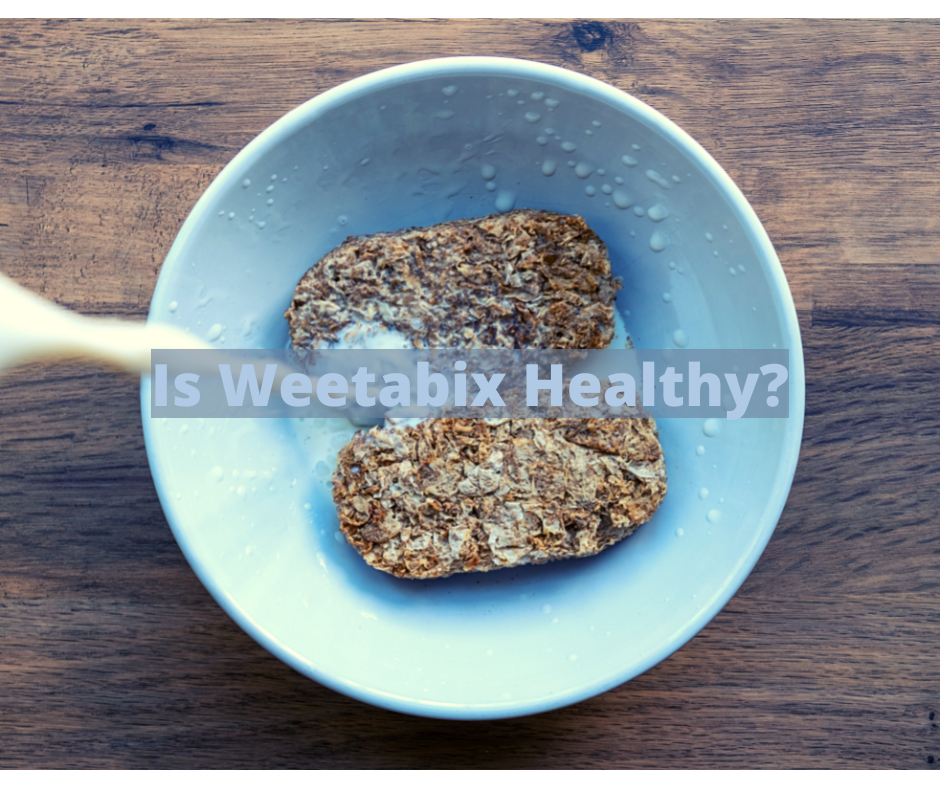
 Vegan3 months ago
Vegan3 months agoIs Weetabix Healthy? 14 Things You Should Know
-
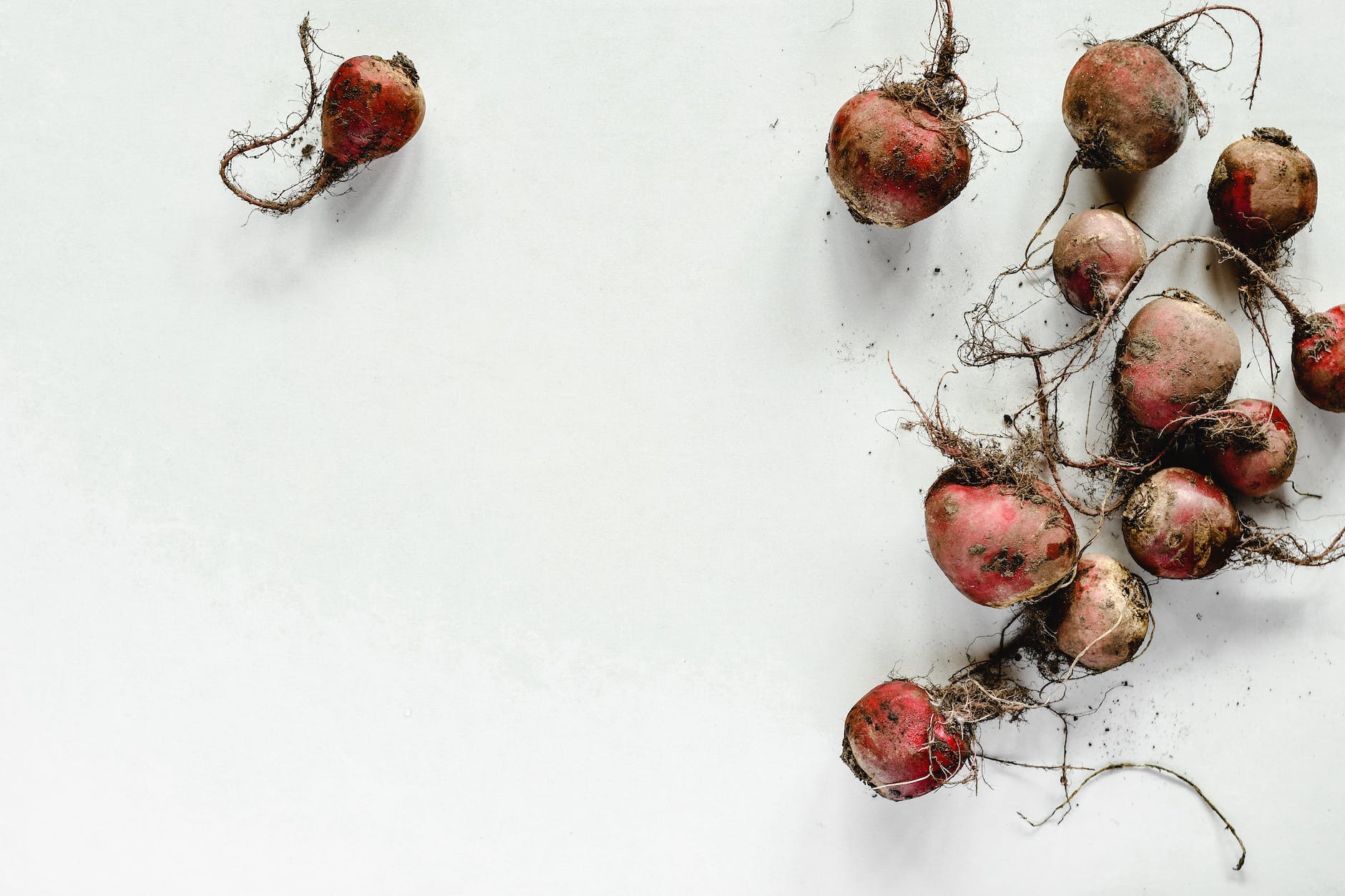
 Raw1 month ago
Raw1 month agoWhy Do Raw Beets Irritate My Throat?
-
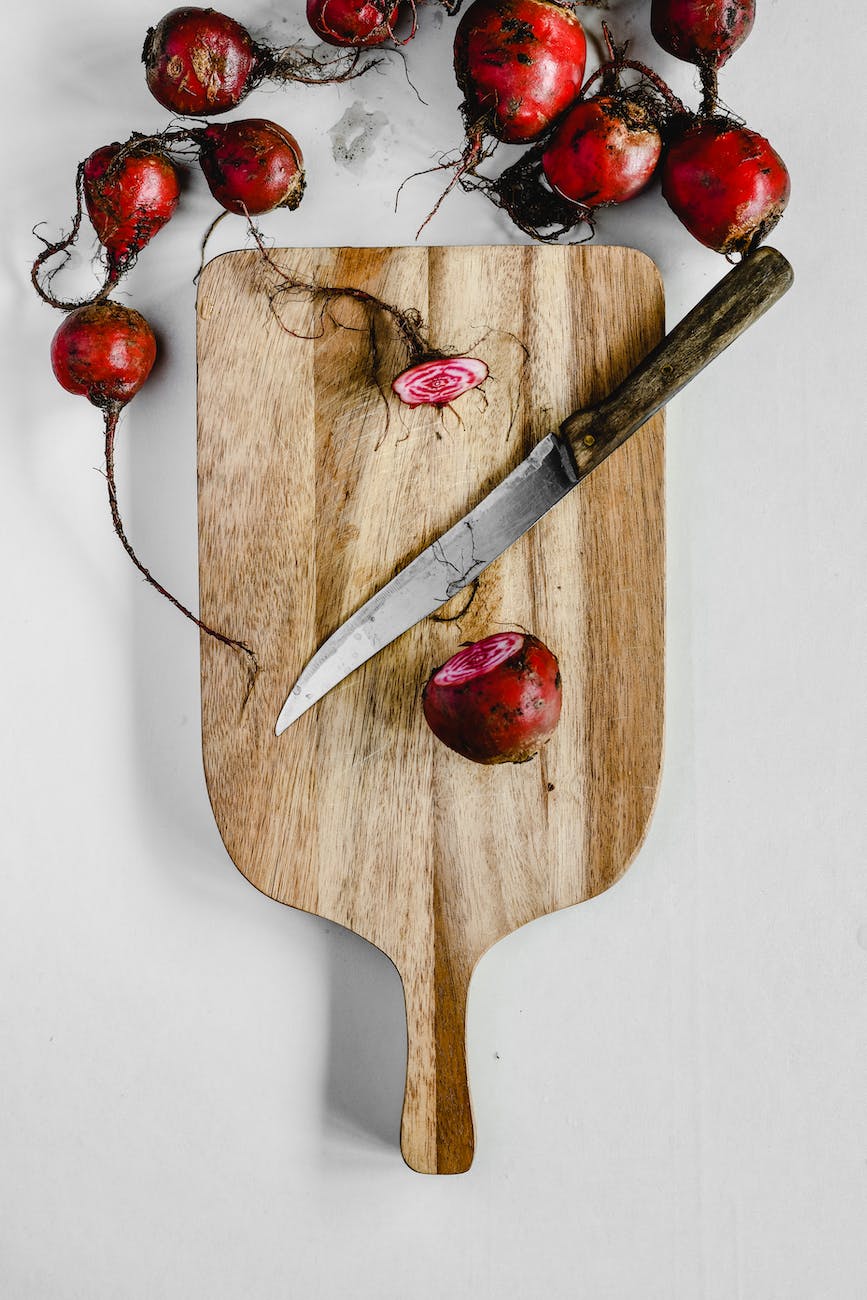
 Beginners Guides1 month ago
Beginners Guides1 month agoIf Beets Are Soft Are They Bad?
-

 Vegan3 months ago
Vegan3 months agoIs Gatorade Zero Healthy? 33 Things You Should Know
-
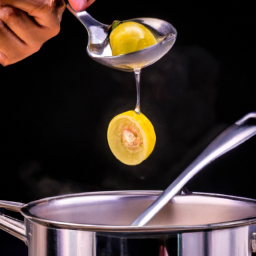
 Juice23 hours ago
Juice23 hours agoHow To Fix Too Much Lemon Juice In Soup
-
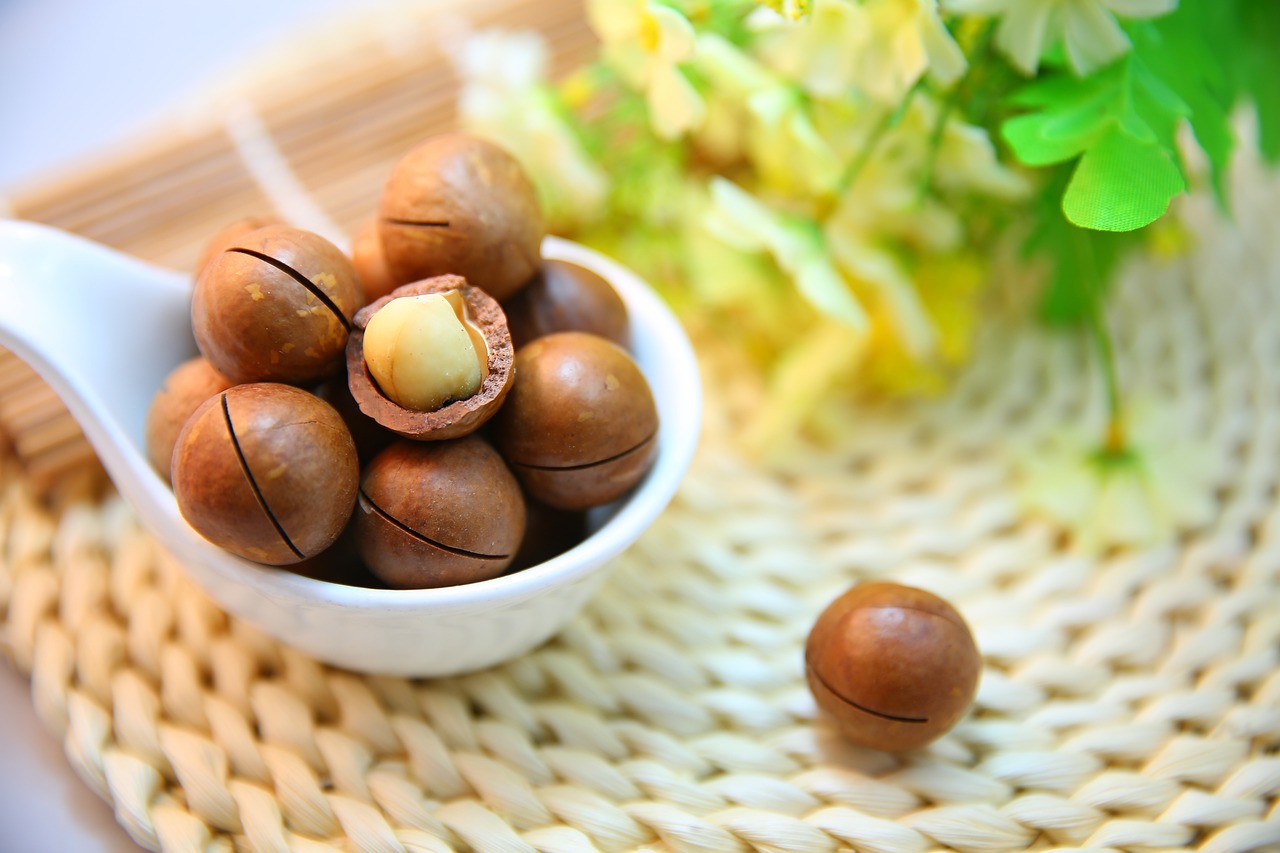
 Raw4 weeks ago
Raw4 weeks agoMacadamia Nuts – Which is Better Nutrition Raw Or Dry Roasted?
-

 Juice3 months ago
Juice3 months agoHow To Make Dmt Vape Juice
-
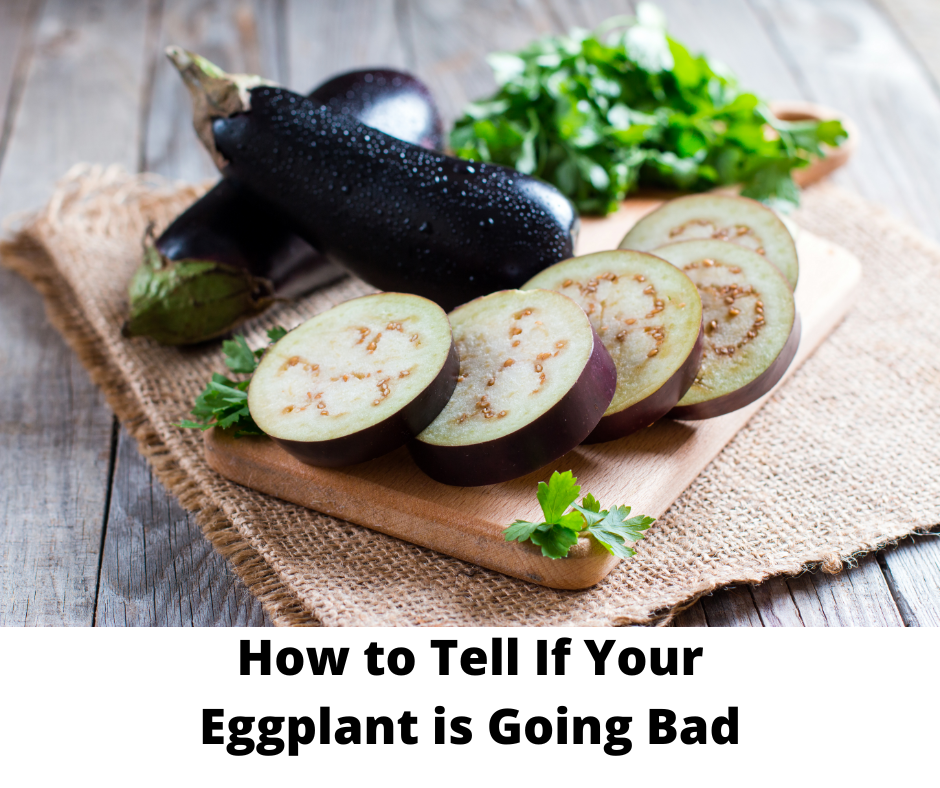
 Vegan3 months ago
Vegan3 months agoHow to Tell If Your Eggplant is Going Bad by Looking at the Color on the Inside




